An Introduction to Production
I had been impatiently waiting for this training course to take place; I was very excited to learn as much as I could about book production. The description promised to offer a comprehensive introduction to the most significant processes. By the end of the day, I indeed walked away much more knowledgeable.
My personal experience in book production was rather limited prior to this training course. I knew the general aspects, processes, work flows and requirements. What I sought to learn from this course were the particular techniques that someone in production needs to be aware of in order to make the appropriate decisions that will benefit both the product and the company. There could not have been a better trainer than Heather O’Connell to accomplish this; she provided all the information and advice gathered from years’ worth of experience on the sector.
The areas discussed during the course were diverse enough to cover the most vital parts of production. One of the first things I learnt was paper types and how knowing all the features of each type can affect the quality of your end product. The key information acquired from this topic was the need to make the right decisions that best suit your project. The cautionary anecdotes that Heather shared for potential pitfalls when choosing paper were invaluable. What I found particularly useful and interesting was how there are certain tricks the production department can opt for to transform a simple paper to something more.
The introduction to colour management and proofing profiles was quite important for me. It is essential to be aware of how colour changes from its digital screen version to the printed version. I also learnt how viewing a proof under certain lighting conditions can alter the actual colour of it. Regarding proofing types, I believe this to be a core knowledge needed to provide the best and most accurate quality for a certain product. Heather was excellent at explaining the features of each proofing type and how to choose the best one for your project. As an addition to this, the course discussed the different printing methods available and the advantages and disadvantages of each process. I was not aware of the indigo/toner based printing and its qualities, so this bit of information was quite valuable. What is more, the various samples provided to help illustrate the printing process were quite effective. Furthermore, the information given on cover finishes proved to be quite illuminating for me. I found out that some techniques do not work so well with certain colours, while others add cost and time to the printing process.
One of the concluding topics was how to select a printer and request a print price. This is invaluable knowledge to bear in mind as it can affect the whole supply chain, as well as the publisher’s finances. Some of the things discussed were issues that a lot of people may not consider as substantial when choosing a printer. The examples Heather presented from her experiences showed how socio-political issues — or even weather conditions — can affect both the price and the turnaround time of book production.
Overall, the ‘Introduction to Production’ training course gave as thorough an overview as possible. It was an excellent opportunity to learn more about production and its various functions within the publishing process. What I treasured most was all the information about alternative options and little tricks that can save money — and perhaps time too — or that can make some features stand out more. I am absolutely positive that all the advice given throughout the course will prove very valuable in the nearby future.
